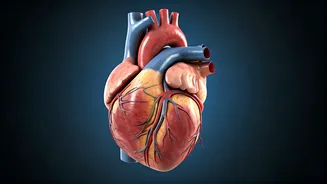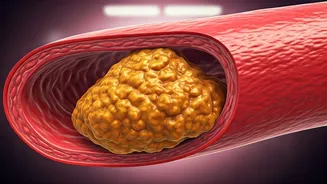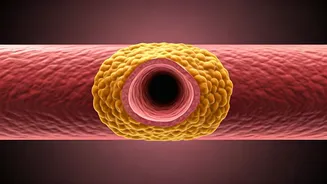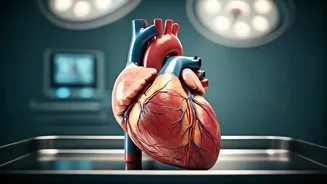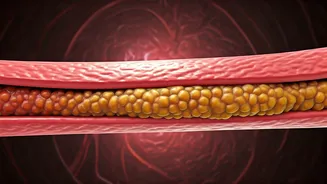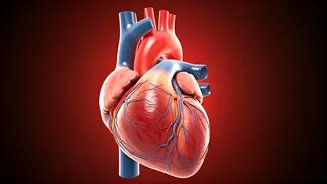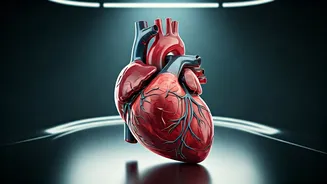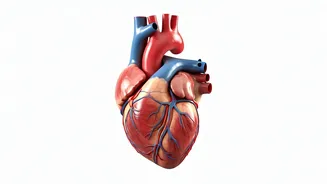Plaque Formation Explained
The buildup of plaques within the arteries, a condition termed atherosclerosis, initiates with damage to the inner lining of the arteries, known as the endothelium.
This damage can be instigated by various factors, including high blood pressure, elevated levels of cholesterol, smoking, and diabetes. When the endothelium is injured, the body's immune response is triggered, leading to the recruitment of inflammatory cells and the accumulation of LDL cholesterol, often called "bad" cholesterol, at the site of injury. Over time, this LDL cholesterol becomes oxidized and, along with other cellular debris, forms plaques. These plaques gradually thicken, narrowing the arteries and reducing blood flow to vital organs. This process not only hinders blood circulation but also increases the risk of serious cardiac events such as heart attacks and strokes. Understanding the mechanisms behind plaque formation is the initial stride toward adopting preventive measures and reducing the risk of cardiovascular diseases.
Symptoms and Detection
The symptoms associated with arterial plaques can vary significantly depending on the location and severity of the blockage. In the early stages, there may be no noticeable symptoms, making early detection challenging. As plaques grow and arteries narrow, individuals may experience chest pain (angina), shortness of breath, or fatigue during physical activity. When plaques obstruct blood flow to the legs, symptoms like pain, numbness, and cramping in the legs and feet, known as peripheral artery disease, can emerge. A variety of diagnostic methods are employed to detect arterial plaques. These include blood tests to assess cholesterol and other lipid levels, and imaging techniques such as ultrasound, CT scans, and angiograms. An angiogram, a procedure involving the injection of a dye into the arteries, reveals blockages in detail. Early detection through regular check-ups and prompt medical evaluations is crucial to prevent serious cardiac events and manage the progression of atherosclerosis.
Lifestyle Changes: The Core
Adopting a heart-healthy lifestyle constitutes a foundational strategy for mitigating the formation and progression of arterial plaques. Key lifestyle adjustments encompass dietary modifications, exercise regimens, and cessation of smoking. A balanced diet, rich in fruits, vegetables, whole grains, and lean proteins, and low in saturated and trans fats, is essential for maintaining optimal cardiovascular health. Regular physical activity, such as brisk walking, jogging, or swimming for at least 30 minutes most days of the week, helps to improve cholesterol levels, lower blood pressure, and maintain a healthy weight. Quitting smoking is paramount, as smoking damages the arteries and accelerates plaque formation. Additional lifestyle adjustments, like managing stress through relaxation techniques and ensuring adequate sleep, also play a significant role in reducing risk factors and enhancing overall well-being. Implementing these lifestyle changes can lead to a considerable reduction in plaque accumulation and contribute to improved heart health over time.
Dietary Approaches
Dietary changes play a crucial role in managing and reversing the effects of arterial plaque. Emphasizing foods that help lower cholesterol and reduce inflammation is central to a heart-healthy diet. Incorporating foods rich in soluble fiber, such as oats, beans, and certain fruits, can help bind cholesterol in the digestive system, reducing its absorption. Omega-3 fatty acids, found in fatty fish like salmon, and walnuts, possess anti-inflammatory properties and can assist in reducing plaque buildup. Limiting saturated and trans fats from red meats, processed foods, and fried items is imperative as they can increase LDL cholesterol levels. The Mediterranean diet, rich in fruits, vegetables, whole grains, olive oil, and fish, has been shown to be especially beneficial for heart health. This diet provides a variety of nutrients and antioxidants, which combat inflammation and support arterial health. Making deliberate food choices supports the body's natural healing mechanisms, helping reduce plaque formation and enhancing overall cardiovascular function.
Medical Treatments: Options
Beyond lifestyle changes, various medical treatments are available to manage and, in some cases, reverse arterial plaque. Medications, such as statins, are frequently prescribed to lower LDL cholesterol levels, slowing the progression of plaque buildup. Other medications may include those that control blood pressure, reduce inflammation, and prevent blood clots. In more severe cases, when arterial blockages are significant, interventional procedures might be necessary. Angioplasty involves inserting a catheter into the blocked artery and inflating a balloon to widen the artery, often accompanied by the placement of a stent to keep the artery open. Coronary artery bypass graft (CABG) surgery is another option, involving the creation of a detour around the blocked artery to improve blood flow. These interventions aim to alleviate symptoms and reduce the risk of heart attacks and strokes. Treatment options are individualized, depending on the severity of the disease and overall health of the patient, and are typically combined with lifestyle modifications to achieve optimal outcomes.
